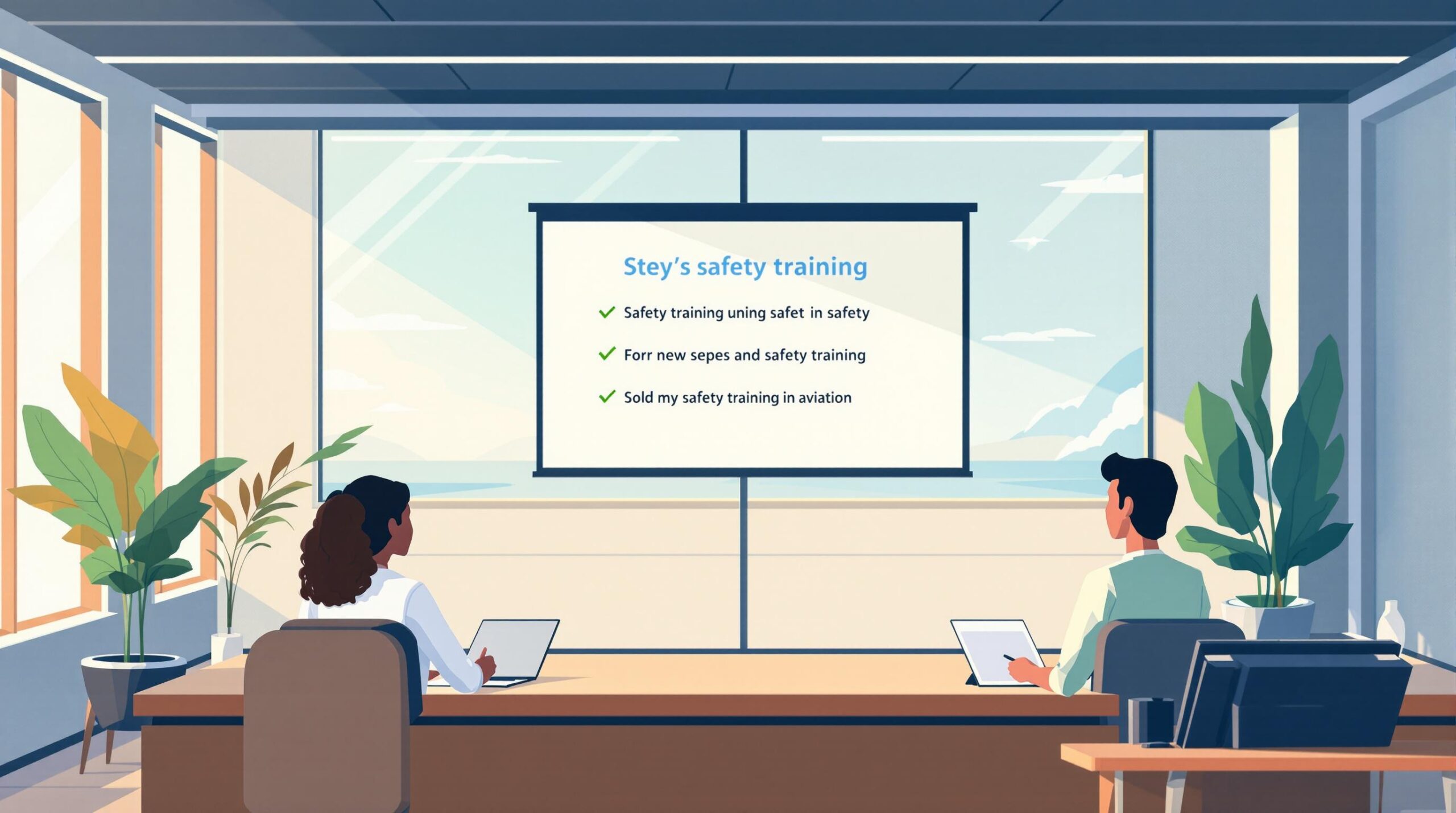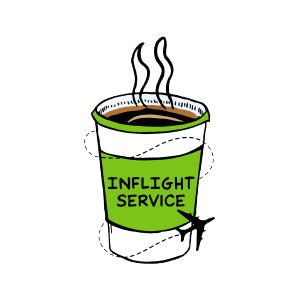Aviation safety training is an ongoing process that prevents incidents, ensures compliance with regulations, and promotes a safety-first mindset.
Here’s a quick guide to the 5 essential steps for effective and continuous safety training in aviation:
- Identify Training Gaps: Review current materials, assess compliance with FAA/ICAO standards, and analyze past incidents to pinpoint weaknesses.
- Develop a Training Plan: Set clear goals, create realistic scenarios, and align content with current safety rules.
- Conduct Training Sessions: Use a mix of methods like simulations, workshops, and digital modules, scheduled to suit operational demands.
- Evaluate Results: Gather feedback, measure knowledge retention, and track safety metrics to assess effectiveness.
- Update Regularly: Stay current with industry changes and integrate safety practices into daily routines.
Key takeaway: Continuous safety training ensures teams are prepared, compliant, and proactive in maintaining the highest safety standards.
SMS Basic Refresher Course
Step 1: Check Current Training Gaps
Take a close look at your safety training program to identify areas that need improvement.
Review Safety Systems and Practices
- Documentation Review: Go through your training materials, safety manuals, and standard operating procedures (SOPs). Look for outdated information or missing sections that need to be updated.
- Compliance Assessment: Compare your training program with the latest FAA regulations and industry standards. Pay special attention to FAR Part 121 and Part 135 requirements for commercial operators.
- Skills Evaluation: Test your staff’s practical skills to find gaps in knowledge, especially in areas like emergency procedures and new technologies.
To stay organized, use an evaluation matrix to track training requirements for different roles:
| Role | Required Certifications | Current Status | Identified Gaps |
|---|---|---|---|
| Flight Crew | Type Rating, CRM, Emergency Procedures | Annual Recurrent Training | Advanced Weather Operations |
| Ground Staff | Ramp Safety, Hazmat Handling | Quarterly Safety Reviews | De-icing Procedures |
| Maintenance | A&P License, System-Specific Training | Bi-annual Updates | New Aircraft Systems |
Study Past Safety Events
Incident Analysis
- Review safety reports from the last 24 months.
- Document recurring issues or patterns.
- Pinpoint factors that training could address.
Where to Find Data
- Safety Management System (SMS) reports
- Flight data monitoring trends
- Voluntary reporting program submissions
- Near-miss incident records
Use real-life incidents to create training scenarios. While doing this, make sure to maintain confidentiality. This approach ensures your training tackles the actual challenges your aviation team faces.
Keep track of safety metrics to find areas that need more attention:
- Response Times: Measure how quickly staff respond to emergencies.
- Compliance Rates: Check how often required safety checks are completed.
- Error Patterns: Note common mistakes or procedural deviations.
These insights will help you refine your training matrix and address the gaps you’ve identified in the next steps.
Step 2: Build Your Training Plan
Design a structured plan to tackle the training gaps you’ve identified.
Define Training Goals
Set clear, measurable objectives to address specific skill gaps. Here’s an example of how to structure these goals:
| Training Area | Goal | Measurement Method |
|---|---|---|
| Emergency Response | Cut response time by 25% | Timed simulation exercises |
| Weather Operations | Eliminate weather-related incidents | Quarterly assessments |
| Equipment Handling | Achieve 100% compliance with SOPs | Monthly performance audits |
Each goal should stick to the SMART framework: Specific, Measurable, Achievable, Relevant, and Time-bound. For instance, you might aim for complete compliance with de-icing procedures.
Once the goals are set, focus on crafting scenarios that mimic real-life challenges to help teams practice and improve.
Create Practice Scenarios
Develop simulations tailored to your airport’s layout, weather patterns, and typical operational hurdles. These could include situations like sudden weather changes, overlapping emergencies, equipment malfunctions, or communication breakdowns.
Focus on testing key skills such as:
- Decision-making under pressure
- Technical know-how with equipment
- Emergency communication
- Efficient resource management
Begin with simpler scenarios and gradually add complexity as teams gain confidence and skill. This approach allows steady growth while keeping participants engaged and motivated.
To make these scenarios as realistic as possible, align them with current safety standards.
Include Current Safety Rules
Ensure your training aligns with regulations like FAR Part 121/135, SMS, and OSHA standards. Incorporate recognized industry practices and update materials regularly to reflect new guidelines.
Use digital tools to access updates quickly and keep training content fresh. Establish a schedule to maintain compliance:
- Review FAA safety bulletins monthly
- Update emergency procedures quarterly
- Conduct a full program evaluation annually
This ensures your training program remains relevant and effective over time.
sbb-itb-de05b1b
Step 3: Run Training Sessions
Set Training Dates
Plan training sessions to ensure maximum participation and smooth execution. Use a rotating schedule that works for different shifts and crew patterns. For example, hold monthly sessions during both morning and afternoon shifts, with makeup dates available for those who miss their assigned times.
Keep seasonal demands in mind when scheduling:
| Season | Focus Area | Frequency |
|---|---|---|
| Peak (Jun–Aug) | Short refreshers | Weekly 30-minute sessions |
| Shoulder (Mar–May, Sep–Nov) | Detailed training | Bi-weekly 2-hour sessions |
| Off-peak (Dec–Feb) | Hands-on simulations | Monthly full-day workshops |
This structure ensures training is both timely and accessible.
Mix Training Methods
Once dates are set, use a variety of teaching methods to keep sessions engaging. Combine practical exercises with theoretical learning through:
- Simulator Training: Allocate 2-hour slots for practicing emergency scenarios and handling uncommon situations.
- Classroom Sessions: Host interactive workshops that cover updates on regulations and operational best practices.
- Virtual Learning: Offer self-paced modules for reviewing standard operating procedures (SOPs).
- On-the-Job Training: Pair seasoned staff with newer team members during regular work shifts.
To ensure understanding, use a teach-back approach where participants explain key procedures to others.
Make Training Easy to Access
Provide training materials that are easy to use and readily available. Set up a centralized digital platform where employees can:
- Download resources in various formats, such as PDFs, videos, or interactive modules.
- Access quick-reference guides for routine procedures.
- Monitor their progress through required training.
- Book makeup sessions if needed.
Optimize materials for mobile devices so employees can review them during breaks or downtime. Break the content into short, 15–20 minute segments for better retention.
Keep sessions relevant by incorporating real-world examples and recent industry events. Update materials every quarter to reflect the latest safety standards and practices in aviation.
Step 4: Check Training Results
Gather Feedback from Participants
Use digital surveys to collect structured feedback within 24 hours of each session. Focus on these key areas:
| Feedback Area | Measurement Method | Review Frequency |
|---|---|---|
| Knowledge Retention | Post-training quizzes | After each session |
| Practical Application | Skills demonstration | Monthly |
| Content Relevance | Participant surveys | Quarterly |
| Delivery Method | Session evaluations | Monthly |
To encourage honest responses, keep feedback anonymous. Hold monthly meetings with instructors to analyze engagement trends and pinpoint areas for improvement.
Adopt a standardized scoring system to evaluate sessions:
- Use a 1-5 scale for session ratings
- Track completion rates for all training modules
- Monitor time spent on virtual learning materials
- Document suggestions for improvement
Pair participant feedback with quantitative data to better assess the training’s effectiveness.
Evaluate Safety Progress
Assess the impact of training by comparing safety metrics before and after the sessions. Focus on these key performance indicators (KPIs):
-
Incident Reporting
Review monthly reports on incidents, near-misses, and safety observations. Look for patterns in the frequency and quality of reporting. -
Compliance Metrics
Examine safety audit results, particularly in areas tied to recent training. Track compliance improvements over 90-day intervals after training. -
Operational Performance
Analyze daily safety checks, equipment inspections, and adherence to procedures.
Prepare quarterly safety scorecards that highlight:
- Changes in the number of safety incidents
- Improvements in compliance rates
- Time efficiency in completing safety procedures
- Success rates in emergency response drills
Review these metrics every quarter to fine-tune the training program and strengthen aviation safety practices.
Step 5: Keep Training Current
After completing a detailed evaluation, make it a priority to regularly update training programs to align with changing industry expectations.
Keep Up with Industry Updates
Stay informed about updates from major aviation authorities. Pay close attention to regulatory changes and revise training materials as needed. This ensures your procedures, equipment guidelines, and safety measures stay aligned with current industry requirements.
Build Safety into Everyday Routines
Make safety a daily habit. Start shifts with quick meetings to discuss safety updates and share tips through peer learning. Recognize team members who identify risks or suggest ways to improve safety processes.
Check in regularly on staff involvement with informal reviews and tweak your methods to keep safety practices top of mind.
Conclusion: Making Safety Training Work
Aviation safety training requires careful planning, effective implementation, and regular evaluation. This ongoing process strengthens safety practices across all areas of operation.
Effective training combines structured learning with real-world application. Balancing technical knowledge with practical skills ensures consistent safety measures. Success depends on engaged teams and strong leadership that prioritizes safety.
The aviation industry is always evolving, which means safety training must keep pace. By regularly reviewing, gathering feedback, and improving programs, organizations can align their training with updated regulations and industry needs. This approach helps maintain top safety standards while preparing for future challenges.




